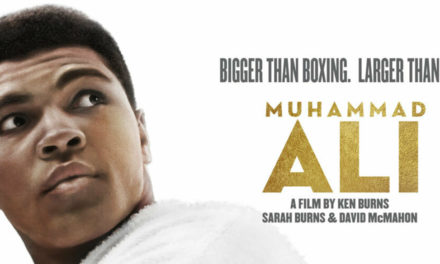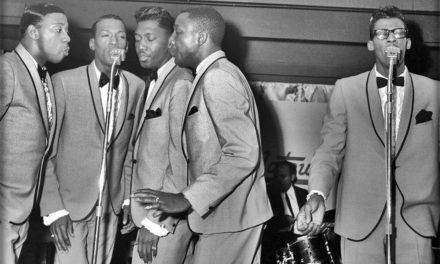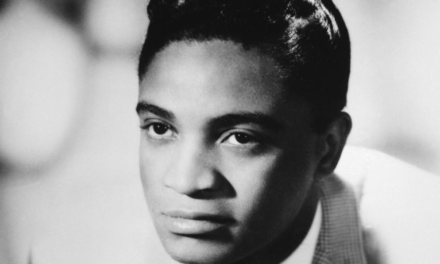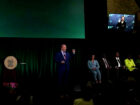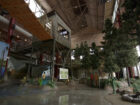The Black Lives Matter movement focuses not only on police brutality. It looks at the entirety of what it means to value Black life in America. Organizers want to redefine the concept of neighborhood safety by placing control within the community. Orlando Bailey spoke with social justice activist Tawana Petty and Bridge Detroit reporter Bryce Huffman about the current state of crimefighting in the city.
This segment is a part of American Black Journal and BridgeDetroit’s collaboration presenting a series of reports on issues threatening the lives of people of color and the groups advocating to protect them.
Read full transcript
Orlando Bailey, Engagement Director, BridgeDetroit The Black Lives Matter movement focuses not only on police brutality. It looks at the entirety of what it means to value black life in America. Organizers want to redefine the concept of neighborhood safety by placing control within the community.
Orlando Bailey, Engagement Director, Bridge Detroit I spoke with social justice activists Tawana Petty and BridgeDetroit reporter Bryce Huffman about the current state of crime-fighting in the city. The Detroit News broke that Detroit is leading the nation in violent crime. Bryce, what is your reaction to that? While we are having this discussion around surveillance and public safety.
Bryce Huffman, Reporter, BridgeDetroit Well, my question in the wake of that would be, have any of these programs like Project Greenlight or having facial recognition technology and live surveillance, has any of that made the city less dangerous? Like, has any of that stopped crime or helped reduce crime? Has any of that made the city feel safer to people who actually live and work here? And I would say not really. Sure, you can point to some types of crimes that have gone down since Project Greenlight came into the fold. But the idea that we’re doing this and investing all this money into something that has all of these civil rights implications has all of these potentials to lead to wrong more wrongful arrest than the ones we’ve already seen. The idea that, sure, we have a lot of crime. So let’s keep investing in these things that falls apart. Once you look at all right, well, how effective are these things at stopping crime? Have these things actually made a difference in the neighborhoods that are stricken by crime or like Project Greenlight tends to show us in like the city tries to tout every time they mention Project Greenlight has it made business owners feel safer? And I think that while, yes, we want business owners to feel safer and feel like their businesses might be robbed or have any issues with crime, you know, the whole idea of Project Greenlight is to make Detroiters feel safer. And, you know, we’re not really seeing anything concrete that points to that.
Bryce Huffman, Reporter, BridgeDetroit Tawana, Detroit leading the nation in violent crime and you’re in the fight against surveillance and facial recognition. How do you react to that?
Tawana Petty,Director, Data Justice Program, Detroit Community Technology Project I mean, I react similarly to Bryce. We’ve spent nearly 30 million dollars on both of these systems since twenty sixteen. And they have not made any drastic reductions in crime. Also, we’ve we always know what reduces crime resource neighborhoods, reduce crime. General lighting in neighborhoods reduces crime. I mean, you don’t need a vivid imagination. Just drive 10 minutes outside the city and see the neighborhoods that have lower crime. They have grocery stores, They have recreation centers, they have adequate public housing infrastructure, and public schools. And so, you know, surveillance has never been a solution to crime. And I don’t understand why in a predominately black city when 13 cities across the country so far and counting have banned facial recognition, which happened to be predominantly white cities, I might add, are saying that this is a racially biased technology, that they will not subject their residents who are black and brown to this technology are they are banning it. They’re standing up against and in the black city and America is doubling down and spending more money on it instead of resources into the communities which could actually reduce crime. Quality of life issues create quality of life crime.
Orlando Bailey, Engagement Director, Bridge Detroit So Bryce facial recognition. You’ve been following this a lot in your reporting. What have you uncovered and what stories are being told in the stratosphere around this facial recognition technology? Is it working? Is it not working?
Bryce Huffman, Reporter, BridgeDetroit So I found two really, I think important things when it comes to facial recognition. And the first is that a lot of Detroiters don’t have a full understanding of how the system works and how facial recognition technology leads to arrests. And the second thing is, when you do understand it, you’re wholly against the technology being used here outside of the people who work for the police department and people who are city officials, people who understand how it goes from an image on a security camera or in security camera footage to the arrest warrant, to the arrest people who understand that process see that, well, using something that, according to the chief himself, only works four percent of the time, you know, to arrest people. That just doesn’t make sense that that seems like a system that is built to harm more and more innocent black people than it’s going to help. So when we look at that, those are the things that really jump out to me. The other thing that jumps out to me is that despite the data showing that it only works four percent of the time, the chief is you know, defending it at every turn. You know, the department invited me to the real-time crime center to kind of see how it operates. And while that visit did ease some of my worries about the technology and its use, it didn’t stop the fact that they’re using a system that is racist. And when I say racist, I mean, it’s known to misidentify black and brown faces in a city that’s 80 percent black. But they keep defending its use despite those numbers, despite the wrongful arrest that we’ve seen with with Robert Williams and Michael Oliver, despite the fact that, you know, nationally and globally, we’re kind of having a reckoning with how we policed black communities. Despite all of those things, the chief and the people in the department are just backing it 100 percent.
Orlando Bailey, Engagement Director, Bridge Detroit Tawana where is the data coming from in these systems? Where is the police getting the photos, am I, is my photo in this database somehow? Where’s all of these pictures and things coming from?
Tawana Petty,Director, Data Justice Program, Detroit Community Technology Project Yeah. So any person in the state of Michigan who has taken an I.D. at the Secretary of State since nineteen ninety-nine is in that database. So we’re literally all in a virtual lineup, not just in Detroit, but then the entire state of Michigan. And so that’s why you saw a Robert Williams get arrested for something in Detroit when he hadn’t even traveled to Detroit. He lives in Farmington Hills. And so his image is in that database. And any time they’re looking for someone, they’re flipping through every person in the state of Michigan to look for that person. So imagine being in a perpetual lineup hoping that this faulty algorithm somehow exonerates you of a crime. And you’re sitting at home watching television, not even knowing that you’re part of an investigation.
Tawana Petty,Director, Data Justice Program, Detroit Community Technology Project They also use images from social media and any other images that they can take. I’ve seen officers in various cities, including Detroit, take up photography and take photo images at protests and things so they can use those images. Now, when they first entered into the facial recognition contract, they had real-time crimes surveillance, which means that they could have taken a cell phone and mark somebody real-time on the spot and connected them to the system and identified them in that point. But because of protests and activism over the last two years, they had to issue a more stringent policy and get rid of real-time crime surveillance. We saw in Baltimore at the Freddie Gray protests that officers scanned the audience of protests and picked people up for tickets and other warrants in the middle of protest. So, you know, we right now we’re going by, you know, the DPD’s promise not to misuse this technology, but any if they if it if the trend that we’re seeing and any other law enforcement agency across the globe is any indication, it will be misused.

